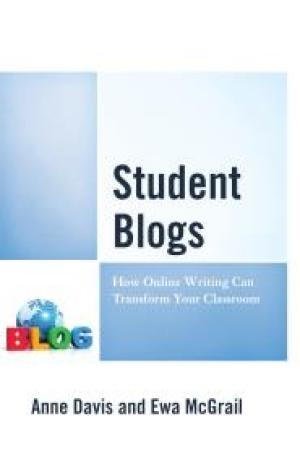Resources by Laura M. Taylor

In Mentoring: Biblical, Theological, and Practical Perspectives, Thompson and Murchison provide a thoughtful collection of essays on Christian mentorship. As a whole, this collection contributes to the growing body of scholarly work on mentoring by offering “windows on mentoring that are biblically grounded, theologically informed, communally diverse, and generationally attentive” (3). The book is divided into four parts, with each of the fourteen chapters highlighting the twenty-one contributors’ unique analyses and insights on mentoring and being mentored. Part 1 surveys biblical perspectives on mentoring. As such, it begins with Brueggemann’s consideration of mentoring practices present throughout the Old Testament and concludes with a posthumous essay by Bartlett on passages in the New Testament that help to shed light on contemporary understandings of the term “mentor.” Part 2 examines the nature and task of mentoring from a variety of theological perspectives and methods. Drawing on the fields of pastoral ministry (Currie), homiletics (Long), ethics (Miles), and feminism (Rigby), the authors provide a range of mentoring models and resources that underscore the importance of positive mentoring relationships and practices in the formation of strong Christian leaders. On this Rebekah Miles writes, “Christian mentoring should include discussion of the ways that our professional goals contribute to the larger goals of Christian life” (83). Part 3, “Diverse National and International Communities of Mentoring,” explores Christian mentoring practices as shaped by particular contexts, including race, gender, and ethnicity. Those who wish to think critically about dominant systems of oppression, such as racism, xenophobia, and sexism, and to foster concrete practices for inclusive mentoring within biblical-theological frameworks will find a wealth of resources in the essays by Pollard, Cannon, De La Rosa, and Kwok. Of particular note is Canon’s proposal that womanist mentoring is a vocational call, “to do the work your soul must have” (123). This section also includes an historical essay by Johnson on mentoring in the Roman Catholic tradition. Finally, Part 4 contains three coauthored chapters that discuss mentoring as a mutually supportive practice that occurs across generations. Ottati and Hinson-Hasty’s essay, “Mentoring toward a Humane Disposition, Attitude, and Imagination,” describes mentoring relationships between the teachers and student, while Nishioka and Lowry and Wardlaw and Murray’s essays consider youth and cross-generational mentoring, respectively The book closes with an afterword by Marty that skillfully and poetically weaves together the insights and value of this collection of essays. He writes, “It is impossible to speak properly about mentoring in entirely impersonal and theoretical terms. Mentoring is and is about a profound personal dimension of scholarly and pastoral work” (223). Those working in theological schools or departments and in Christian ministry will find this collection of essays to be a valuable resource on the virtue and art of mentoring. The strength of this volume lies not only in its biblical and theological reflections on mentoring, but also in the range of everyday lived experiences and perspectives from which the authors write.

Derived from the authors’ year-long research study of a fifth-grade classroom’s experience with blogging, this work suggests that integrating student blogs into a curriculum is an effective way to promote student writing. According to the authors, requiring students to blog not only enhances their written communication skills by making writing a priority, but it also increases student investment in learning by providing a space for them to share their opinions, build content literacies across the curriculum, and learn in conversation with one another. Overall, this book provides educators with an accessible guide to incorporating student blogs into the classroom. It is divided into six chapters, plus a brief review of relevant works in digital literacy. In the first two chapters, the authors focus on how to integrate blogging. Chapter 1 highlights several important decisions that educators interested in teaching with blogs must consider – namely, how will student blogging contribute to one’s overall learning goals, what blogging platform to use, and whether the student blogs will be public or private. Once the answers to these questions are in place, Chapter 2 suggests effective methods for introducing students to the practice of blogging, as well as the importance of creating guidelines and procedures for safe and responsible online writing. Chapters 3 and 4 look at student blogging in action, suggesting that when students can practice and experiment with their writing in a low-risk environment they become more effective writers. Whereas Chapter 3 gives an inside view of the blogging instruction and learning that occurred in the authors’ fifth-grade classroom, Chapter 4 considers the importance of creating an interactive learning community that encourages dialogue and fosters student excitement for writing. Because digital spaces require students to engage with an audience beyond their teacher or peers, the authors contend that students are better able to engage their ideas in conversation with others and to see value in their writing. Finally, Chapters 5 and 6 outline several logistical concerns around student blogging. In Chapter 5, the authors cover basic tenants of copyright and fair use issues to help prepare teachers and students for the responsible use of the copyrighted works and images created by others. Following this discussion of digital citizenship, Chapter 6 discusses the importance of offering formative rather than evaluative feedback throughout the blogging process. The authors claim that regular, low-stakes assessment is foundational to supporting and developing successful student writers. Given the authors’ focus on elementary school writers, this book is perhaps most useful for K-12 educators who wish to begin incorporating student blogs into their classrooms. Nevertheless, those in higher education who are aspiring to improve student writing will also be able to glean sound pedagogical reasons for incorporating student blogs into our classrooms, as well as a helpful framework for how to do so. Unfortunately, several of the activities and examples provided by the authors throughout the book will be unhelpful given their primary and secondary school context.